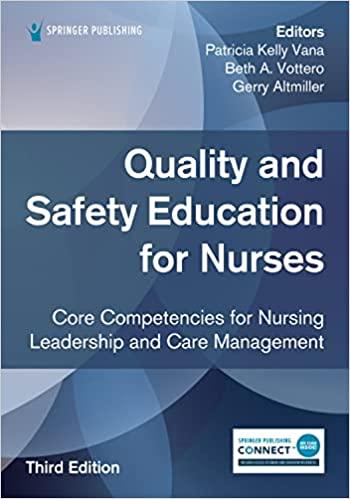Mr. Thomas is a 55-year-old male who presented to the emergency department (ED) with a gunshot wound.
Question:
Mr. Thomas is a 55-year-old male who presented to the emergency department (ED)
with a gunshot wound. Due to the immediate situation’s urgency, little information was exchanged regarding the patient’s identifying information upon ED admission.
An RN case manager, part of the patient interprofessional team in the ICU, began gathering information about the patient and his health history. A chart review noted that the patient had been seen in the ED seven times in the past 5 weeks. Three of these visits had taken place in the last 3 days. During each of the past three visits, the patient asked for a referral to an inpatient sobriety program to “become clean.”
However, the social worker notes indicated that the patient was told he was not eligible for an inpatient sobriety program until he attended a 30-day outpatient program.
Mr. Thomas lives with his mother, Mrs. Thomas. She is his emergency contact. Mrs.
Thomas indicated that her son lost his job 3 years ago and has been struggling with alcohol abuse since then. He does not have a car or a driver’s license. Mr. Thomas is Medicaid eligible but missed his last appointment with the Medicaid Family Services Department, leaving his Medicaid currently inactive. As a result, he cannot afford his medication and he is currently not taking any prescribed medications. His medical history is significant for prior suicidal ideation, depression, diabetes mellitus type 2, hypertension, and hyperlipidemia.
Later in the day, at the weekly scheduled interprofessional team meeting, the ED physicians, the assistant RN manager from the ED, social workers, and RN case managers from the ED and ICU discussed an agenda item focusing on the increase of patients arriving to the ED with alcohol and/or drug intoxication. The main topic of discussion focused on improving strategies to help this patient population, noting that some patients arrive seeking help and others do not.
1. What SDoH may be impacting Mr. Thomas’s health?
2. Identify two SDoH interventions that could be addressed for Mr. Thomas.
3. What SDoH interventions could be considered for the entire patient population presenting to the ED with alcohol and/or drug intoxication?
Step by Step Answer:

Quality And Safety Education For Nurses Core Competencies For Nursing Leadership And Care Management
ISBN: 9780826161444
3rd Edition
Authors: Patricia Kelly Vana, Beth A. Vottero, Gerry Altmiller






